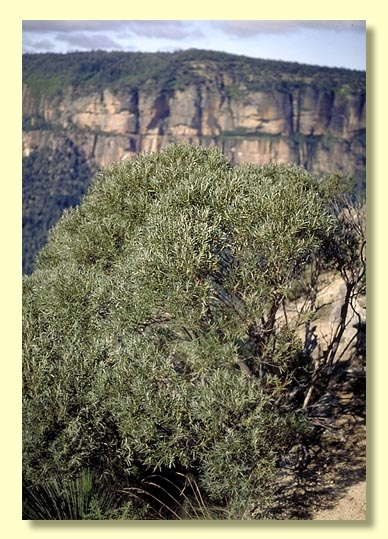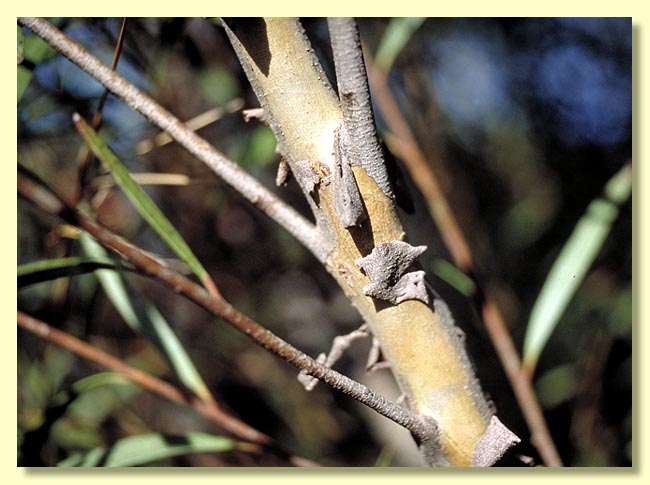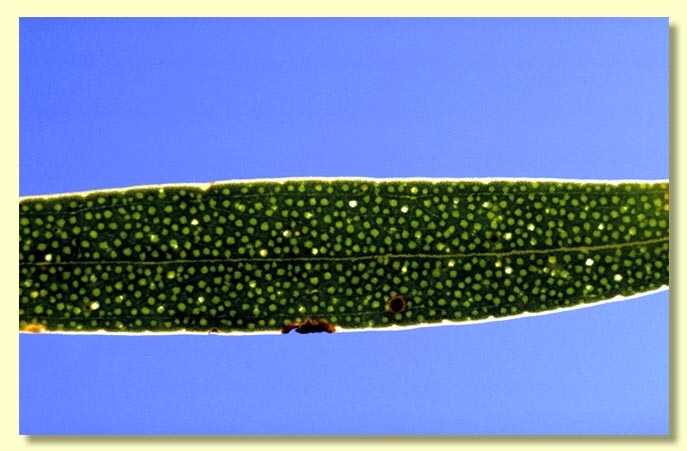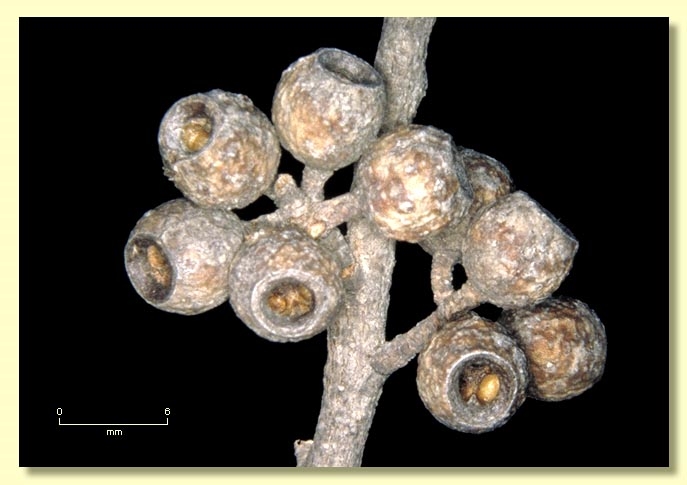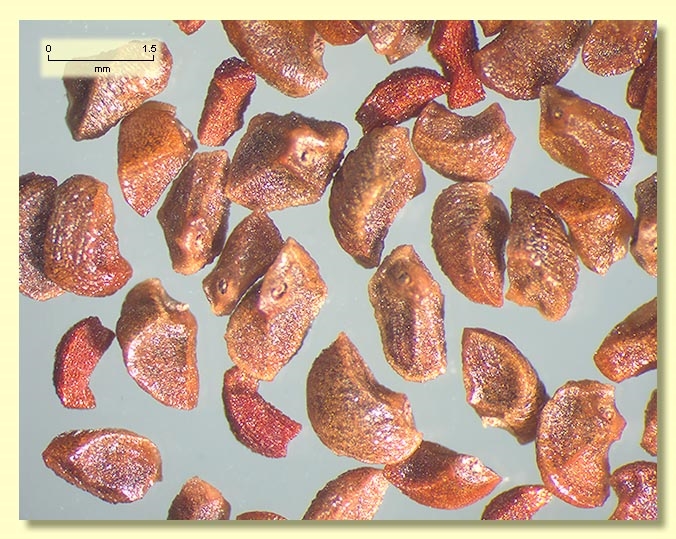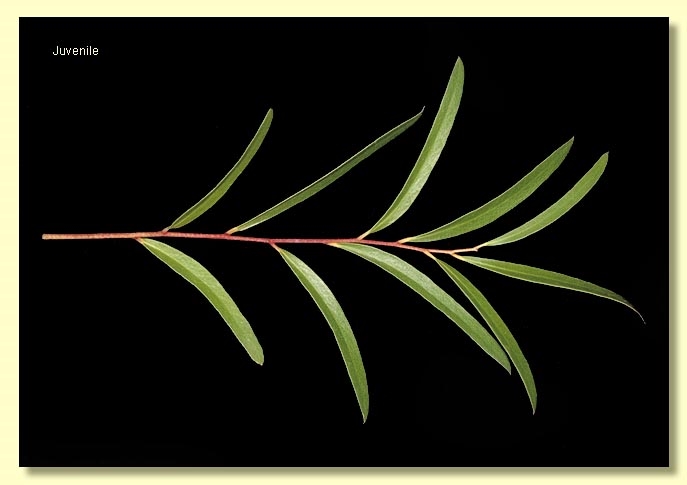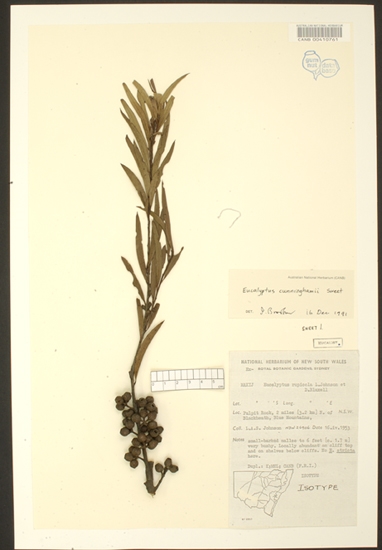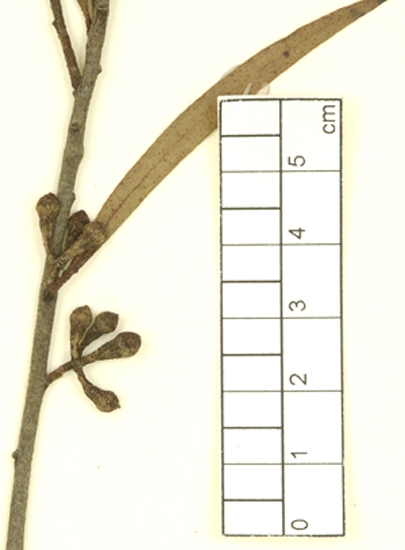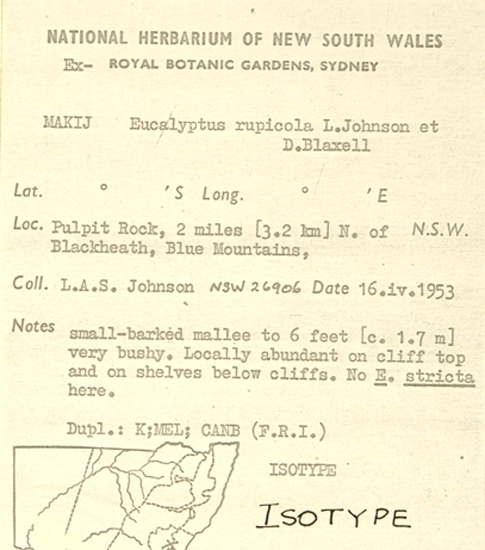Euclid - Online edition
Eucalyptus cunninghamii
Eucalyptus | Eucalyptus | Eucalyptus | Strictae | Regulares
Eucalyptus microphylla A.Cunn. in Field, B. (ed.) (1825), On the Botany of the Blue Mountains. Geographical Memoirs on New South Wales: 350. T: Blue Mts, N.S.W., Oct. 1822, A.Cunningham 32; lecto: BM.
Note from APNI (accessed 26 Nov 2019): "Several other sheets in K labelled 'E. microphylla' are not indisputably Cunningham 32, and bear mixed collections including E. moorei, E. stricta and E. cunninghamii." Comment: Although the specimen Cunningham 32 at BM was listed by Johnson & Hill (in Flora Australia 19: 508 (1988)) as the "holo", since Cunningham did not list the details of any specimens in the protologue this citation is here considered to constitute an effective lectotypification by Johnson & Hill under ICN Art. 9.10 (Shenzhen Code, 2018).
Eucalyptus rupicola L.A.S.Johnson & Blaxell, Contr. New South Wales Natl Herb. 4: 287 (1972). T: Pulpit Rock, 3.2 km N of Blackheath, NSW, 16 Apr. 1953, L.A.S.Johnson NSW 26906; holo: NSW; iso: CANB, MEL.
Bark smooth, grey, often with scribbles.
Juvenile growth (coppice or field seedlings to 50 cm): stem rounded in cross-section, smooth or warty; juvenile leaves sessile, opposite for 5 or 6 nodes, then alternate, shortly petiolate, linear to narrowly lanceolate 5–10 cm long, 0.3–0.5 cm wide, concolorous, green.
Adult leaves alternate, petiole 0.2–0.5 cm long; blade linear to narrowly lanceolate, 3–10 cm long, 0.3–0.8 cm wide, base tapering to petiole, concolorous or slightly discolorous, glossy, green, side-veins obscure, reticulation absent, intramarginal vein absent or parallel to and remote from margin, oil glands island; new growth tips pink.
Inflorescence axillary unbranched, peduncles 0.3–0.8 cm long, buds 7 or 9 per umbel, pedicels 0.2–0.4 cm long. Mature buds obovoid or clavate, 0.4–0.6 cm long, 0.3 cm wide, green or pinkish, usually warty, scar absent, operculum conical to rounded, stamens inflexed or irregularly flexed, anthers reniform to cordate, versatile, dorsifixed, dehiscing by confluent slits, style long, stigma tapered, locules 3 or 4, the placentae each with 2 vertical ovule rows. Flowers white.
Fruit pedicellate (pedicels 0.1–0.2(0.3) cm long), urceolate, barrel-shaped or truncate-globose, 0.5–0.8 cm long, 0.5–0.7 cm wide, disc descending, valves 3 or 4, enclosed.
Seeds brown, 1–1.5 mm long, pyramidal or obliquely pyramidal, dorsal surface smooth, hilum terminal.
Cultivated seedlings (measured at ca node 10): cotyledons reniform; stems rounded in cross-section, slightly warty; leaves sessile and opposite for 4 or 5 nodes then alternate and shortly petiolate, linear to narrowly lanceolate, 5–10 cm long, 0.4–1.5 cm wide, base tapering, glossy, green.
Flowering has been recorded in April, September and December.
A dwarf mallee endemic to New South Wales, restricted to the Blue Mountains west of Sydney, occurring on sandstone-derived soils on cliff edges and upper sides of the Jamieson, Kedumba, Megalong and Grose valleys, also in the vicinity of Blackheath, Katoomba, Leura and Wentworth Falls.
A mallee ash, Eucalyptus cunninghamii differs from related green-leaved mallee ashes, e.g. E. stricta, by the bluish grey to pinkish grey crown, very fine leaves, delicate buds and fruit, and scabrid juvenile stems. The leaf oil glands are more prominent than in the green-leaved ashes and relate E. cunninghamii to the northern green-leaved mallee ashes such as E. approximans.
Eucalyptus cunninghamii belongs in Eucalyptus subgenus Eucalyptus section Eucalyptus series Strictae, because of a combination of characters: mallee habit with smooth bark, alternate, green juvenile leaves, adult leaves held ± erect and with obscure side-veins and little or no visible reticulation, single axillary inflorescences, the buds in clusters of seven or nine, with buds having only one operculum and reniform anthers, ovules in two rows, and ± pyramidal seeds. Within series Strictae, E. approximans, E. cunninghamii and E. paliformis form a small group, subseries Regulares, characterised by the leaf oil glands being round in outline.

